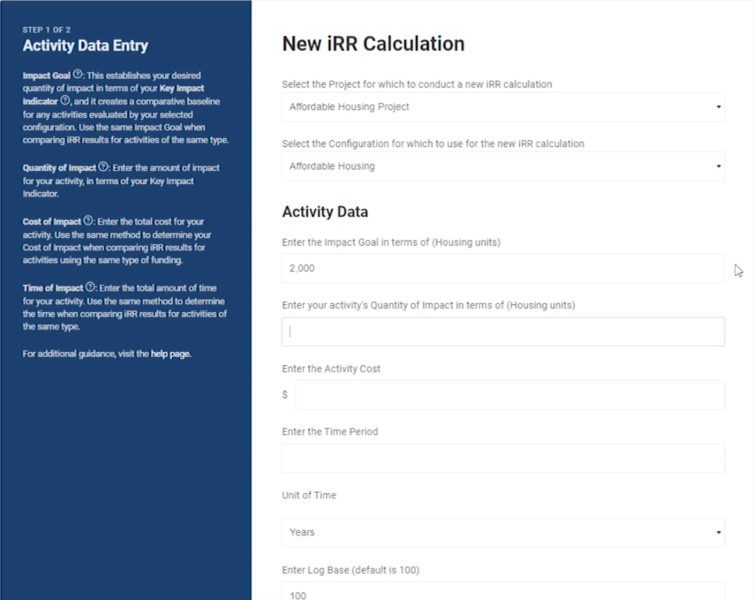Impact Investment or Venture Philanthropy?
Insights from social investors in Hong Kong and Japan

At the epicenter of decades-long seismic environmental, social, and economic upheaval, Puerto Rico has mounted a bold, cross-sector revitalisation effort. A consortium of thought leaders from Bluetide Puerto Rico, a nonprofit focused on capacity building for marine ecosystems, Statebook, an economic data provider, Global Impact LLC, an advisory firm specialising in project, investment, and organizational performance measurement and management, and the US Dept of Commerce, among others, have designed a holistic, strategic plan for the island to revitalise its coastal ecosystem and economic outlook. They’ve tapped social enterprises, both for profit and nonprofit, to catalyze it.
“We don’t want to build back to what we were before,” says Calandra Cruickshank, CEO of Statebook, “We want to leapfrog into a whole new era. We recognize that we need to build capacity from the inside out.”
The innovations will be showcased at the 2nd Bluetide Caribbean Summit on August 17th, showcasing business skills trainings, ecosystem-building initiatives, and peer-to-peer collaborations — all with the goal of attracting investors and unlocking funding.
The question then becomes, how will funders decide where to place their capital? With a mix of NGOs, local nonprofits, and businesses in the cohort, there will be a range of prospects for financial returns. Funders are adept at evaluating financials. But social and environmental measurement tools, specifically ones designed to generate comparable insights specifically for investors, are only beginning to emerge. The consortium has chosen to implement a new evaluative lens called Impact Rate of Return or iRR, at least in part, to give funders a hand.
The question then becomes, how will funders decide where to place their capital?
A project of Howard W. Buffett, professor at Columbia University and grandson of Warren Buffett, the tool is designed to help investors compare the direct impact potential from dollars of funding. Bluetide’s custom iRR tool deployment is nearly complete and will be available to the enterprises participating in the Blue Economy initiative over the coming months.
The tool uses a point system that incorporates a) the quantity of a project’s activities, b) the timeframe for their delivery, c) the project’s cost, and d) scores for hitting self-assigned performance targets (also referred to as “quality”) weighted by importance across 30+ metrics and 6 categories of impact. The formula divides quantity by quality, cost, and time, generating an iRR Score displayed as a percentage, and an impact multiplier score out of 100. While there is not yet a formal pricing model for the tool, Buffett says social enterprises will pay a nominal access fee to Bluetide, which will support the Blue Economy initiative.
Buffett took me through a demo for a housing project, which, while unrelated to the Blue Economy Initiative, illustrates the user experience. A user begins by selecting a category, a subcategory, and an impact indicator. The library of indicators is filtered based on the project type and need; Bluetide’s indicators, for example, were developed after interviewing enterprise leaders to understand which indicators they would be able to report on, and which would be challenging or difficult. Some of the difficult indicators were eliminated, and the challenging ones were revised until leaders found them to be more manageable.
In the case of the housing demo, impact delivery is based on the number of housing units. We entered 600.

Courtesy of Global Impact LLC
We then selected metrics; for Bluetide’s deployment, these metrics are organised under key principles released in a Tetratech/Blue Tide Report. In the housing demo, we chose a community needs assessment as one of our metrics, and weighted the importance of this indicator at 20%.

Courtesy of Global Impact LLC
Then we move on to setting up a scoring rubric for the “quality” of impact. If, for example, a 100% of housing units have a community needs assessment, it can be assigned “100% top range rating.” If only 5% do, it can be assigned a 20% Low Range Rating. The tool allows for negative ratings if a housing unit creates harm as well. This is the iRR’s way of benchmarking performance — indicating how well one project is performing against another. We expected all housing units would receive a community needs assessment, so we were given a 100% score for that metric.

Courtesy of Global Impact LLC
Finally, we entered our expected activity data, including project timeline and cost. We entered 5 years and a $120M cost.

Courtesy of Global Impact LLC
Users progress through this process for over 30 metrics and scores are generated using the iRR formula: Quantity divided by cost, quality, and time. We received an “impact multiplier” score of 91 out of 100, and an iRR Score of 25%. These scores are intended to enable investors to compare relative impact potential from their capital. Another project might receive an impact multiplier of 50 and an iRR of 10%. The tool’s instruction indicates that, “the higher the iRR, the greater the amount of impact your activity delivers on a per dollar basis.” The impact multiplier score indicates how the quality of your impact delivery compares to others.

Courtesy of Global Impact LLC
The formula is itself “agnostic,” deferring to the user to set the weighting of metrics, and the scores for hitting varying performance levels. Buffett explains, “we assume that we’re operating in an environment with the best intentions and full transparency. If there’s double counting, that can be easily spotted, discussed, and examined…. If we’re very clear about what we’re trying to count, then we can be forgiving around what gets attributed to [one project] versus others”. Buffett says they can apply discounts to account for questionable attribution, but the tool is not currently configured to account for this. There is also limited functionality in the tool’s current iteration for users to upload supplemental supporting data for their inputs. Bluetide plans to email users to submit supporting evidence.
In a broader Theory of Change, the data aggregated and analysed with Bluetide’s deployment of the iRR tool focuses on direct outputs: the activities completed by a project. But with any impact-driven initiative, the challenge is always to evaluate changes resulting from these activities: how will sustainably built housing units affect change in Puerto Rico — for whom, to what degree, and at what economic value? How will these outcomes then contribute to the revitalization of the economy and ecosystems there?
This, to me, is the bottom line.
To answer this question, the consortium looks to Statebook data that can track changes happening with high resolution, down to a census block. They can see changes in, for example, the number of degrees awarded across key skill sets in specific geographies and correlate these changes with relevant projects.
As the Blue Economy initiative rolls out over the coming months, it will be interesting to hear from funders themselves on the role iRR played in informing their decisions.
The project is part of Puerto Rico’s first Economic Development District, which qualifies it for federal dollars. As Puerto Rico builds additional districts, they plan to expand this model across the island.
—
This article is Part Two of a series produced by Impact Entrepreneur about current and planned “blue economy” and resilience initiatives in Puerto Rico, the U.S. Virgin Islands, and broader Caribbean. This series is an outreach effort to communicate the Blue Economy Course of Action ECN 10 found in the Economic and Disaster Recovery Plan for Puerto Rico and bluetidepr.org. Other articles in the series are listed below as they appear.
I. A New Framework for Economic Revitalization in Puerto Rico
III. Resilience: Two experts discuss its importance to the impact economy
IV. Restoring Coral Reefs Is One Key to Puerto Rico’s Economic Future
V. Technology and Sustainability: A Way Forward for Puerto Rico?
VI. El Bienestar Común, or How Puerto Rico is Taking Care of Itself
VII. Public-Private Partnerships Can Lead to More Local Ownership
VIII. Puerto Rico’s Place on ‘Hurricane Highway’ Key to Economic Growth
IX. Blue Your Mind: Innovations Feeding the Fishing Industry and Catalyzing the Blue Economy
Related Content
Comments
Deep Dives
RECENT
Editor's Picks
Webinars

Featuring
Sheldon Gilbert
Founder & CEO, Kura Labs
April 17 - 12:00 PM EST

Featuring
Elizabeth Boggs Davidsen
CEO of GSG Impact
May 8 - 12:00 PM EST
News & Events
Subscribe to our newsletter to receive updates about new Magazine content and upcoming webinars, deep dives, and events.
Become a Premium Member to access the full library of webinars and deep dives, exclusive membership portal, member directory, message board, and curated live chats.
0 Comments